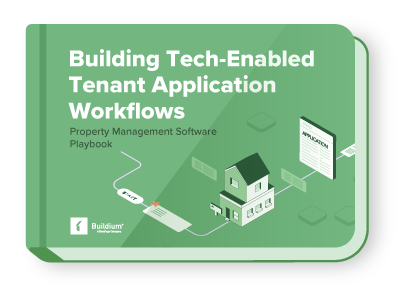When industry experts talk about the nation’s hottest real estate markets, all eyes usually turn to New York, San Francisco, Los Angeles and Boston. These cities have strong economies. They’re experiencing population growth. And they’re the beneficiaries of a massive influx of foreign capital.
And yet, despite the high prices of real estate in these markets, not all are great for investor ROI. In fact, an analysis of 75 metropolitan areas finds that neither the NYC region (#56) nor the Boston region (#17) rank in the Top 15 for rental property ROI. It could be that these markets are too strong—the high price investors have to pay to acquire assets in these areas drags down overall returns.
What’s more, All Property Management’s 2015 Rental Ranking Report finds that the Northeast, overall, had a disappointing 2015 for the rental market. There were two surprise outliers, though: Worcester (#35) and Springfield (#43), Massachusetts. These two mid-sized cities are typically dismissed as Boston’s red-headed stepchildren. But indeed, the report finds that Worcester and Springfield offer some of the greatest returns for investors looking to buy in the Northeast.
In Part 3 of this four-part series, we look at what’s propelling ROI in these cities, earning them a spot on the 2015 list ahead of places like Providence, Baltimore, Philadelphia and (surprisingly) New York.
Part 3: Boston’s Outer-Ring Metros Prove to be Northeast’s ROI Outliers
Of course people would love to buy real estate in Boston and New York, but property has just become too expensive. The sky-high rents generated in these markets are no longer enough to justify the high purchase price most sellers are demanding. As a result, people are starting to look at secondary markets like Worcester and Springfield, MA.
What’s up with Worcester?
According to All Property Management, Worcester had the single lowest vacancy rate (3.05%) in 2015 of all metros studied, coming in ahead of Los Angeles (3.28%), Providence (3.30%), Boston (3.38%) and Portland, Oregon (3.43%). And the vacancy rate continues to decline. A look back at 2014 data finds that the Worcester vacancy rate was 3.7%, still low but not as low as it is today.
There are a few factors contributing to Worcester’s low vacancy rates. First, it’s important to understand that the Worcester region was pummeled during the Great Recession. Although the real estate market has recovered somewhat, an estimated 591 properties are still in some stage of foreclosure. Many of those who lost their homes during the recession are now forced to rent as they rebuild credit.
But there simply aren’t enough rental apartments to satisfy demand.
“Razor-thin vacancy rates in [markets like Worcester] are placing upward pressure on home prices and rents,” explains Daren Blomquist, vice president at RealtyTrac. “While that may be good news for sellers and landlords, it is bad news for buyers and renters.” In May 2016, Worcester’s median rent was $1,561/month. Many renters would prefer to put this towards a mortgage, but are finding that difficult to do, too.
Worcester County’s per capita income is only $31,537. With such low wages, saving for a down payment while managing other financial obligations is challenging. As a result, prospective buyers are staying in the rental market for longer periods of time (to the benefit of landlords).
When people are ready to buy, the market for entry-level homes is incredibly tight. “The minute something comes on the market, we don’t even get a chance to preview it,” says realtor Janice Mitchell of Holden, MA. With only 43 permits issued for new single-family home construction in Worcester last year, supply is likely to remain constrained for the foreseeable future, making it even harder for people to buy (and requiring steeper down payments in order to be competitive, when they do).
Another factor driving Worcester’s ROI is the strong job market. According to the 2015 Rental Ranking Report, Worcester ranks 5th in the nation based upon its Jobs Availability Index, the ratio of people to current job openings on LinkedIn and Indeed.com. A low ratio indicates high future job growth (and therefore, population growth), in turn indicating high future demand for housing.
It would be (and has been) easy to dismiss Worcester as a down-on-its-luck city, devoid of industry and plagued by crumbling infrastructure and deteriorating buildings – but that’s changing.
The city and surrounding area are home to 15 colleges (including Holy Cross, Worcester Polytechnic Institute and Worcester State) and nearly 40,000 students. The City and local employers have ramped up efforts to attract and retain this highly-educated workforce. “The sense of Worcester as an old, industrial city is really no longer accurate,” said David P. Angel, president of Clark University and head of the Higher Education Consortium of Central Massachusetts, an association of Worcester-area colleges. “The question for us is: What can we do more to make this a really attractive place for students, faculty, and staff to work, reside, and stay.”
Whatever they’re doing seems to be working. New data show that “recent college graduates are more likely to be living in the City of Worcester than those who graduated a decade earlier.” Efforts to redevelop City Square in downtown Worcester are certainly a boost to the region. The master-planned district will include 350+ luxury studio, 1BR and 2BR units targeted toward young professionals. The buildings will be chock-full of amenities, including an outdoor pool, courtyard with fire pits, a dog run, fitness center and full-time concierge.
The local economy and housing market is poised for yet another boost now that the MTBA has launched “bullet trains” between Boston and Worcester. For the first time, riders can get between the two cities in under an hour. Those priced out of Boston are starting to see Worcester as a viable alternative, where housing costs are nearly half that of Boston; and employers in Worcester can expand without worrying about access to a talented workforce.
Springfield’s surprising strength
Like Worcester, Springfield is experiencing tremendous job growth, which is boosting rental ROI. Springfield ranks 4th in the nation based upon the Jobs Availability Index. The outlook for this coming year is also strong, with Springfield moving up a notch to #3 during Q1 2016.
Springfield’s economic growth is largely attributed to a handful of major redevelopment projects. Namely, the $950 million MGM Casino is now under construction, as is the $88 million redevelopment of Union Station. The casino is expected to create 2,000 construction jobs and 3,000 permanent jobs, and these workers will need somewhere to live. Many already live in the area, others will likely relocated from NY, VT and other parts of MA to take advantage of these new opportunities.
Meanwhile, Union Station will reactivate a long-dormant intermodal transportation center, thereby improving access to downtown Springfield and local employers. An “Innovation District” is gaining steam downtown, supported by free municipal Wi-Fi.
Those local employers already include 450+ machining companies, supported by the medical, renewable energy and aerospace industry. CRRC USA Rail Corp Factory is opening a $107 million, 213,000 SF facility in East Springfield in order to manufacture new Red and Orange Line trains for the MBTA. That project is expected to create more than 150 jobs. Springfield remains an attractive location for advanced manufacturing, warehousing/logistics, and high-tech companies given its proximity to both Boston and New York City.
A portion of the region’s R&D capacity is thanks to the Holyoke High Performance Computing Center, located nearby. This joint-venture with UMass, MIT, Harvard, Boston University and Northeastern University supports biomedical and high-tech development, and has sparked new business formation throughout the metro area.
ROI in Springfield is slightly lower than Worcester, which is likely attributed to its low Rent Variance in 2015. Springfield’s Rent variance (-4.14%) was actually the worst in the nation last year. However, it appears that the promise of the casino, Union Station and other redevelopment efforts have led to a course correction. In Q1 2016, Springfield actually ranks first in the nation for Rent Variance (+23.81%), well above the national average (+4.80%) and ahead of Grand Rapids (+18.28%), New York City (+16.25%), Milwaukee (+15.48%) and Baton Rouge (+12.50%) – the others placing in the Top 5.
Conclusion
As it turns out, Boston’s red-headed stepchildren are producing red-hot returns when compared to the ROI potential of other northeastern markets. Over the next several months, as development continues to pick up steam in Worcester and Springfield, the availability of jobs will only boost these markets by attracting new residents to these regions.
But perhaps more bluntly, residents and businesses alike are being priced out of Boston and New York. Instead, they’re flocking to secondary markets where transit access, job opportunities and affordable housing all coincide. Investors looking for strong ROI should keep an eye on these markets, and may even consider following suit.
Read more on Industry Research

